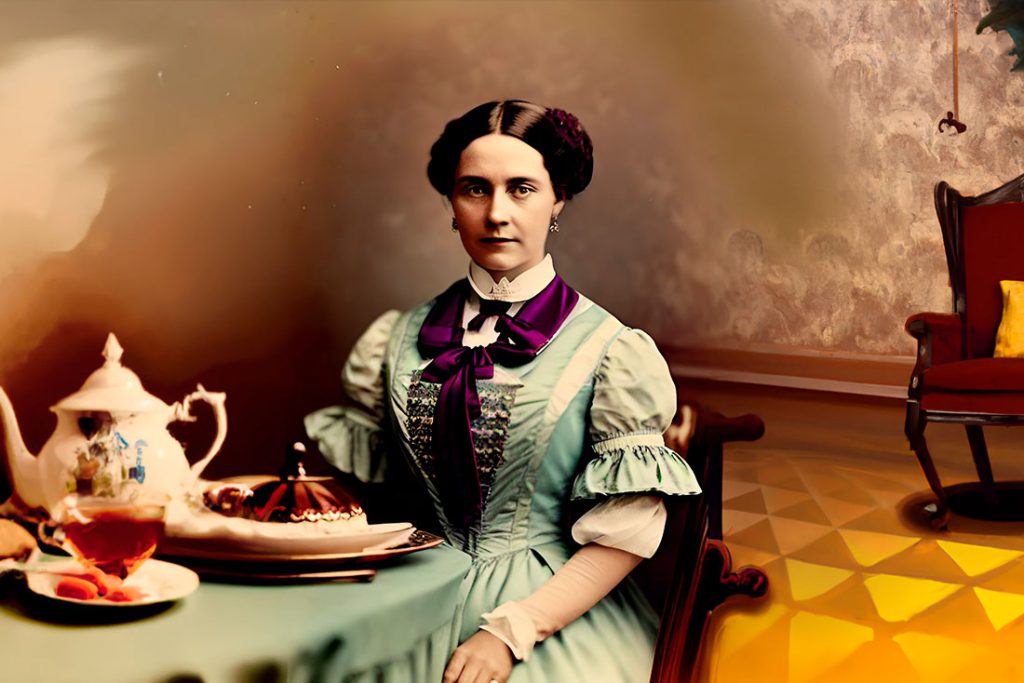Create a background for an image in the style of the Victorian era
During the reign of Queen Victoria of England (1837–1901), a distinctive era known as the Victorian age unfolded. This period was characterized by societal standards that deeply influenced personal grooming and dress fashions. The austere and restrictive norms of the time fostered a unique perspective towards beauty that still resonates in the modern world.

The Victorian Era
Victorian women embraced a naturalistic approach to beauty, valuing a clear, pale complexion as an indicator of gentility and refinement. The use of cosmetics was largely avoided, and instead, they sought to preserve their skin’s health and beauty through natural means. Beauty masks made from organic ingredients such as honey, eggs, oatmeal, and others were popular. These ingredients, widely recognized today for their nourishing properties, were combined in a myriad of ways to create face masks that cleansed, hydrated, and nourished the skin.
Contrary to modern practices, Victorian women eschewed bold, artificial color in favor of a natural flush. Instead of applying rouge or lipstick, they would pinch their cheeks and bite their lips to induce a subtle, natural color. This practice underscores the Victorian era’s emphasis on modesty and natural beauty, a stark contrast to the vibrant and expressive makeup trends of later periods.
Despite the seeming simplicity of these personal grooming habits, the Victorian era was a time of significant innovation in the beauty industry. One notable contribution was the invention of the metal hot comb in France in 1845. This tool was used to temporarily straighten curly hair, offering a new way for women to control and style their hair.
Similarly transformative was the invention of the first curling iron with tongs heated by a gas burner in 1872. This creation is attributed to Marcel Grateau, also known as François Marcel Woelfflé. The device revolutionized hair styling, enabling women to curl their hair at home and experiment with different styles, a freedom that had previously been limited to the hairdresser’s salon.
As beauty practices evolved, so did the dissemination of information about them. The publication of the first professional beauty magazine, the American Hairdresser, in 1877 marked an important milestone. This periodical brought beauty and grooming advice, trends, and information to a broader audience, democratizing knowledge that had once been the preserve of the elite.
The Victorian era also saw the foundation of what would become one of the longest-lived professional beauty product companies still in operation today. In 1880, Franz Ströher founded a German beauty company, later renamed Wella Professionals. This establishment symbolized the growing recognition of beauty care as a professional and commercial industry.
The Victorian era, thus, served as a pivotal period in the history of personal grooming and beauty. The emphasis on natural beauty and pioneering advancements in the industry set the stage for modern beauty practices. While societal norms have drastically evolved since the Victorian age, the impact of this period continues to reverberate in our contemporary understanding and approach towards beauty.






